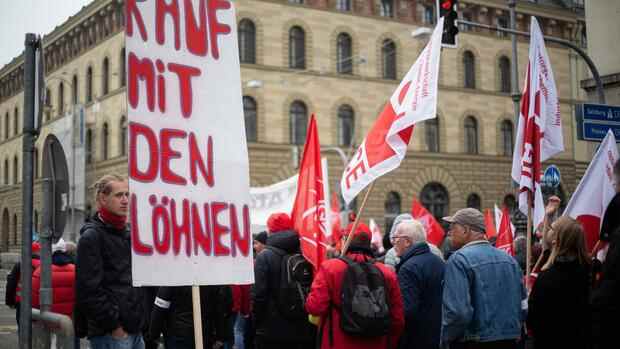Frankfurt Central bankers are currently primarily concerned with one thing: the risk of a wage-price spiral. What is meant is a cycle in which prices and wages drive each other up, for example when unions demand higher wages and this in turn is reflected in prices.
In a study, former International Monetary Fund (IMF) chief economist Olivier Blanchard and economist Jean Pisany-Ferry of Washington’s Peterson Institute for International Economics (PIIE) propose radical steps to prevent such a constellation. The collective bargaining parties and the state should agree on moderate wage increases in joint talks. In return, the state could relieve consumers of energy prices.
Relief for the ECB in fighting inflation
“Normally, such measures go much too far,” says Pisany-Ferry in an interview with the Handelsblatt. However, the current situation is so extraordinary “that special means are needed to calm it down”. He points out that prices have risen sharply as a result of the consequences of the pandemic. Now the energy price shock is added by the war in Ukraine.
Top jobs of the day
Find the best jobs now and
be notified by email.
The classic remedy for high inflation would be to raise interest rates. But the ECB is currently in a dilemma. The war in Ukraine further fueled price developments. That speaks for rate hikes. However, the consequences of the war are also depressing purchasing power and creating economic uncertainty – which rather speaks against such a step.
Most recently, leading ECB officials signaled an increase for July. But the scope for tightening monetary policy is limited – and it usually takes effect with a time lag.
In Pisany-Ferry’s view, fiscal policy should therefore support the ECB in fighting inflation. He and Blanchard propose: The euro countries partly compensate consumers for the loss of income they suffer from the current energy price hike. This in turn would create scope for more moderate wage settlements.
The economists suggest financing the relief through new debt. They argue that euro countries could afford this because real yields in the euro area, i.e. after deducting inflation, are still extremely low. In Germany, for example, the nominal yield on ten-year federal bonds is currently around one percent – well below the inflation rate.
Various variants to relieve consumers
There are various options for compensating consumers. One of them is temporary tax cuts for energy. In Germany, for example, the federal government wants to introduce a tank discount for three months from June. During this period, the energy tax on fuels is to be reduced. The advantage: This directly drives down the prices. However, lower prices also create an incentive for consumers to use more petrol – which in turn leads to rising prices.
Another alternative would be price caps. In France, the state has asked the country’s major electricity companies to raise prices by a maximum of four percent in 2022. But this puts a strain on companies.
The route preferred by Pisany-Ferry and Blanchard is one-off payments to consumers. This approach can also be found in the Federal Government’s planned relief package in the form of an energy allowance of 300 euros, which all employed persons in Germany are to receive. From the economists’ point of view, however, the one-off payments should be designed according to need, for example by restricting the payments to people below a certain income threshold.
This is partly the case with the energy allowance because it is subject to income tax. The higher the income of the recipients, the less they have left over net. The increase in energy prices tends to hit low earners harder because they spend a larger proportion of their income on energy.
>>> Also read: Doves or hawks: The Governing Council of the ECB is divided along these lines
In return for the relief, the social partners and the state should agree on moderate wage settlements. “A continuation of the high inflation would be bad for all sides. Therefore, the collective bargaining parties and the states should agree on wage developments this year,” argues Pisany-Ferry.
The proposal brings back memories of the “Alliance for Jobs” in Germany. From 1998 to 2003, the then red-green federal government under Chancellor Gerhard Schröder organized a dialogue between employers, trade unions and the government. Among other things, it was about wage moderation and the creation of jobs.
The Netherlands followed a similar approach, which they called the “polder model”. Unlike these historical examples, Pisany-Ferry and Blanchard are only interested in a short-term solution to deal with the extraordinary situation caused by the pandemic and the energy price shock.
More: 89 percent of companies fear a wage-price spiral
